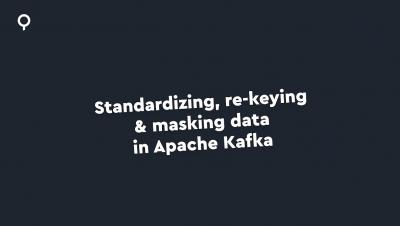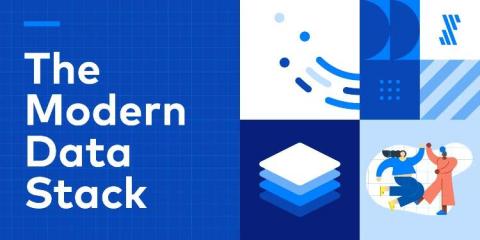Systems | Development | Analytics | API | Testing
Analytics
Standardizing, re-keying and masking data in #ApacheKafka
What Is Data Analytics?
Learn the how and what of analytics and data integration. This is the first in a two-part abridged version of The Essential Guide to Data Integration. Read Part 2 here, and get the full book for free here! You can also watch the webinar. What is data analytics How do you integrate data? Should you build or buy a data analytics solution? What are some business and technical considerations for choosing a data analytics tool, and how can you get started? Let’s start with the first two questions.
Seven Ways to Scale a Data-Driven Culture in Your Organization
Without an overarching company data culture, even the best technology tools won’t get you where you want to go, say the co-founders of Data Culture. Data isn’t just a tech solution. For Gabi Steele and Leah Weiss, founders of the consultancy Data Culture, it’s also a “people” solution. Even within companies that enthusiastically embrace a cloud-based modern data stack, a substantial gap often exists between the business and data sides of the organization.
SELECT ApacheKafka WITH StreamingSQL FROM RealTimeData
In another life, I taught the Book of Genesis to high school students, including The Tower of Babel excerpt. It struck me ironic that God’s wrath strikes down the tower, cofounds the universal language and scatters humans around the globe to teach King Nimrod a lesson in hubris; meanwhile, the boys in my class were texting their girlfriends across the country and playing video games with friends in Europe and Asia.
What's new in BigQuery ML: non-linear model types and model export
We launched BigQuery ML, an integrated part of Google Cloud’s BigQuery data warehouse, in 2018 as a SQL interface for training and using linear models. Many customers with a large amount of data in BigQuery started using BigQuery ML to remove the need for data ETL, since it brought ML directly to their stored data. Due to ease of explainability, linear models worked quite well for many of our customers.
Making a coffee run? Upgrade CDW while you are gone.
Upgrading components of Cloudera Data Warehouse (CDW) is as easy as one decision and a few clicks. While the Database (DB) Catalog and Virtual Warehouses (VWs) need to be compatible, the CDW upgrade framework understands the interoperability constraints between them.
8 key considerations for choosing an Embedded Analytics solution
Historically, analytics has not always been a priority feature for software vendors. Many applications typically are built with analytics bolted-on later, as standalone tools. But the changing needs of today’s business users has accelerated the importance of providing in-built ways to monitor and explore their data while they use your software.
Data-Driven Digital Transformation Means Cloud Data and Analytics
Last year, Gartner declared that on-premises databases are now legacy technology. Are we ready to say the same for analytics and BI?
Designing the NBS Visual Vocabulary: How An Idle Challenge Turned Into An Everyday BI Tool
Anyone can make a chart, but what’s the right chart? It’s a daily question for BI practitioners, and many of us have been using the highly acclaimed FT Visual Vocabulary to answer that question since its release in 2016.











